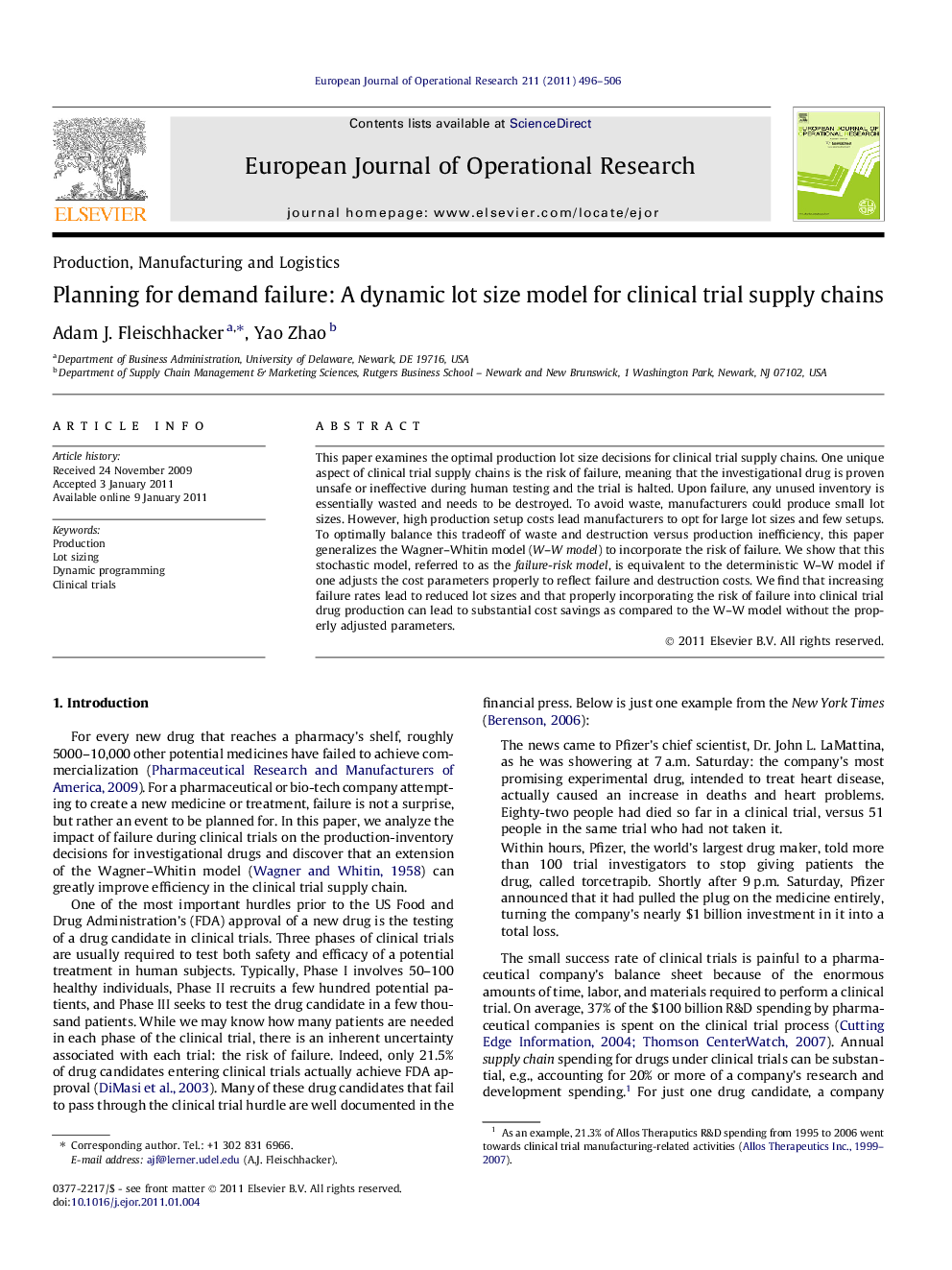| Article ID | Journal | Published Year | Pages | File Type |
|---|---|---|---|---|
| 480344 | European Journal of Operational Research | 2011 | 11 Pages |
This paper examines the optimal production lot size decisions for clinical trial supply chains. One unique aspect of clinical trial supply chains is the risk of failure, meaning that the investigational drug is proven unsafe or ineffective during human testing and the trial is halted. Upon failure, any unused inventory is essentially wasted and needs to be destroyed. To avoid waste, manufacturers could produce small lot sizes. However, high production setup costs lead manufacturers to opt for large lot sizes and few setups. To optimally balance this tradeoff of waste and destruction versus production inefficiency, this paper generalizes the Wagner–Whitin model (W–W model) to incorporate the risk of failure. We show that this stochastic model, referred to as the failure-risk model, is equivalent to the deterministic W–W model if one adjusts the cost parameters properly to reflect failure and destruction costs. We find that increasing failure rates lead to reduced lot sizes and that properly incorporating the risk of failure into clinical trial drug production can lead to substantial cost savings as compared to the W–W model without the properly adjusted parameters.
